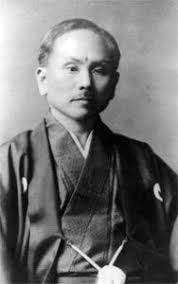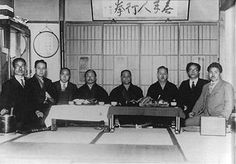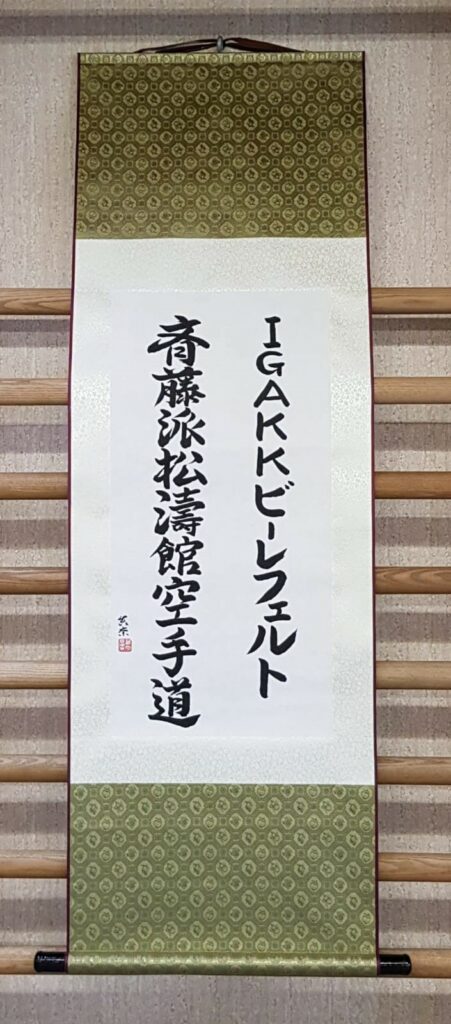
Das Dojo Schweicheln ist eine Karateabteilung der Sportgemeinschaft Schweicheln, die eine Shotokan Karate Plattform für seine Mitglieder bietet. Wir trainieren reines, modernes, traditionelles Shotokan Karate-Do und sind der IGAKK Deutschland angeschlossen.
English Version:
Dojo Schweicheln is a Karate section of the Sport Community Schweicheln Association that provide a Shotokan Karate Platform for its members. We train pure modern traditional Shotokan Karate-Do and we are affiliated with IGAKK Germany
Die IGAKK ist Mitglied der International Ryukyukai Martial Arts Association
English Version:
The IGAKK is a member of the International Ryukyukai Martial Arts Association.
German Translation
Dieses System lehrt traditionelles Shotokan-Karate-do als Grundlage und fügt als finalen Feinschliff die Kampfkunst Aikijujitsu. Bevor Meister Funakoshi nach Japan kam, praktizierte er Shorin-Ryu und Shorei-Ryu, zusammen mit anderen Stilen. Shorin-Ryu und Shorei-Ryu waren jedoch die beiden wichtigsten Stile, die er zu dem modernen Stil Shotokan zusammenführte. – Robert M. Handley , Hanshi
Karate-Do Das Wort Karate besteht aus zwei Teilen, Kara und Te. Kara bedeutet „leer“ und te bedeutet „Hand“. Zusammen bedeutet das Wort Karate buchstäblich die leere Hand. Karate-Do bedeutet Weg der leeren Hand oder der Weg der leeren Hand. Ein Karateschüler (Karateka) sollte in der Lage sein, sich ohne den Einsatz von Waffen zu verteidigen. Das Suffix Do impliziert, dass Karate-Do ein Weg oder eine Art der Selbstführung ist, nicht nur das Studium von Kampftechniken. Das Üben von echtem Karate-Do geht über Kampftechniken und über die Mauern des Dojos hinaus. Karate-Do bedeutet, die Grundsätze des Karate-Do nicht nur im Dojo, sondern auch im täglichen Leben zu praktizieren. So ist zum Beispiel der Respekt gegenüber anderen innerhalb und außerhalb des Dojos ein Kernprinzip des Karate-Do. Der Geschichte des Shotokan Gichin Funakoshi, dem Begründer des Shotokan-Karate, wird allgemein zugeschrieben, dass er das Karate auf den Hauptinseln Japans eingeführt und popularisiert hat.

Funakoshi war ein Schüler von Asato Ankō und Itosu Ankō, die sich 1902 für die Einführung des Karate im Schulsystem der Präfektur Okinawa eingesetzt hatten. Zu den prominenten Lehrern dieser Zeit, die ebenfalls Einfluss auf die Verbreitung des Karate in Japan hatten, gehörten Kenwa Mabuni, Chōjun Miyagi, Motobu Chōki, Kanken Tōyama und Kanbun Uechi. Da Japan zu dieser Zeit in China einmarschierte und Funakoshi wusste, dass die ursprüngliche Bedeutung von China-Hand von den Japanern nicht akzeptiert werden würde, änderte er den Stilnamen in Weg der leeren Hand. Das Suffix dō bedeutet, dass Karate-dō nicht nur ein Studium der technischen Aspekte des Kampfes ist. Das do in Karate-dō unterscheidet es von Karate Jutsu, so wie Aikido von Aiki-jutsu, Judo von Jujutsu, Kendo von Kenjutsu und Laido von Lai-Jutsu unterschieden wird. Funakoshi hatte in zwei der damals populären Zweige des okinawanischen Karate, Shorin-ryū und Shōrei-ryū, trainiert. In Japan wurde er vom Kendo beeinflusst und nahm einige Ideen über Distanz und Timing in seinen Stil auf. Shoto bedeutet wogende Kiefern und war auch das Pseudonym von Meister Funakoshi, dem Begründer des Shotokan-Karate. Kan ist ein japanischer Begriff für Halle. Der Name Shotokan wurde von den Schülern von Meister Funakoshi als Name für das damalige Honbu-Dojo (Zentral-Dojo) gewählt. Das Shotokan (Halle des Shoto) wurde 1939 fertiggestellt und war ursprünglich der Name des zentralen Dojos und nicht der Name des Kampfkunststils.
Masatoshi Nakayama, ein Schüler von Meister Funakoshi, half 1949 bei der Gründung der Japan Karate Association (JKA), die dazu diente, das Shotokan Karate zu popularisieren. Fast 40 Jahre lang, bis zu seinem Tod 1987, setzte sich Nakayama für die Verbreitung des Shotokan-Karate in der ganzen Welt ein. Shotokan hat sich im Laufe der Jahre weiterentwickelt und wird heute in fast allen Ländern der Welt praktiziert. Karatemeister in Tokio (ca. 1930er Jahre) Kanken Toyama, Hironori Ohtsuka, Takeshi Shimoda, Gichin Funakoshi, Motobu Chōki, Kenwa Mabuni, Genwa Nakasone und Shinken Taira (von links nach rechts)
English Version:
This system teaches traditional Shotokan Karate-do as it’s foundation and adds combat Aikijujitsu as the finishing touch. Before Master Funakoshi came to Japan, he was practicing Shorin-ryu and Shorei-ryu, along with other styles. However, Shorin-ryu and Shorei-ryu were the two major styles that he combined to form the modern style called Shotokan. – Robert M. Handley, HanshiKarate-Do The word Karate has two parts, kara and te. Kara translates to empty and te translates to hand. Together, the word karate literally means empty hand. Karate-Do means empty hand way or the path of empty hand. A karate student (karateka) should be able to defend himself or herself without the use of weapons. The do suffix implies that karate-do is a path or way of conducting yourself, not just the study of fighting techniques. Practicing true Karate-do goes beyond fighting techniques and beyond the walls of the dojo. Karate-Do implies practicing the principles of Karate-Do not just in the dojo, but in your everyday life as well. As example, respecting others both inside and outside of the dojo is a core principle of Karate-do. History of Shotokan Gichin Funakoshi, founder of Shotokan karate, is generally credited with having introduced and popularized karate on the main islands of Japan. Funakoshi was a student of both Asato Ankō and Itosu Ankō, who had worked to introduce karate to the Okinawa Prefectural School System in 1902. During this period, prominent teachers who also influenced the spread of karate in Japan included Kenwa Mabuni, Chōjun Miyagi, Motobu Chōki, Kanken Tōyama, and Kanbun Uechi. Japan was invading China at the time, and Funakoshi knew that the original meaning of China hand would not be accepted by the Japanese, so he changed the style name to way of the empty hand. The dō suffix implies that karate-dō is not just a study of the technical aspects of fighting. The do in karate-dō sets it apart from karate jutsu, just as aikido is distinguished from aiki-jutsu, judo from jujutsu, kendo from kenjutsu, and iaido from iai-jutsu. Funakoshi had trained in two of the popular branches of Okinawan karate of the time, Shorin-ryū and Shōrei-ryū. In Japan he was influenced by Kendo, incorporating some ideas about distancing and timing into his style. Shoto means billowy pine trees, and was also the pen name of Master Funakoshi, the founder of Shotokan Karate. Kan is a Japanese term for Hall. The name Shotokan was chosen by Master Funakoshi’s students as the name of the Honbu (Central) dojo at the time. The Shotokan (Hall of Shoto) was completed in 1939 and was initially the name of the central dojo and not the name of the martial arts style. Masatoshi Nakayama, a student of Master Funakoshi, helped establish the Japan Karate Association (JKA) in 1949, which served to popularize Shotokan Karate. For nearly 40 years, until his death in 1987, Nakayama worked to spread Shotokan karate throughout the world. Shotokan has evolved over the years and is now practiced in nearly every country throughout the world. Masters of karate in Tokyo (Approx. 1930s) Kanken Toyama, Hironori Ohtsuka, Takeshi Shimoda, Gichin Funakoshi, Motobu Chōki, Kenwa Mabuni, Genwa Nakasone, and Shinken Taira (from left to right)



